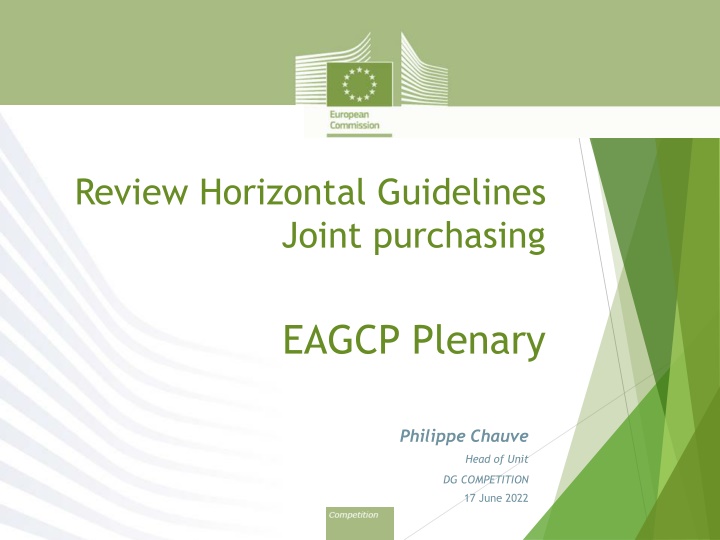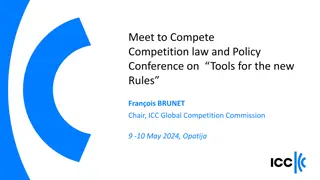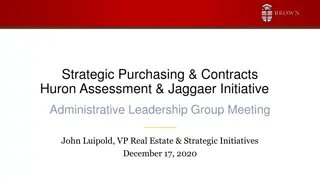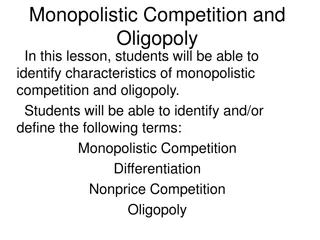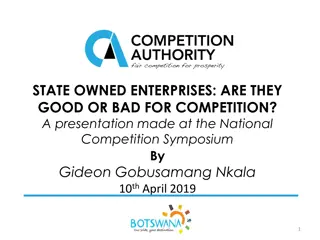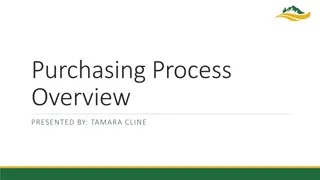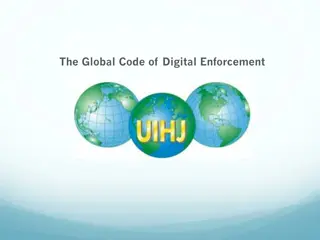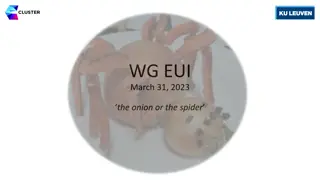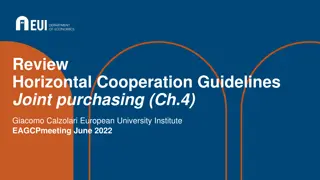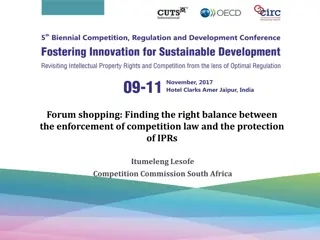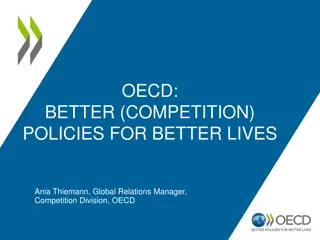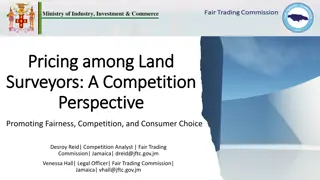Insights into Joint Purchasing Alliances in Competition Enforcement
Review the main characteristics, benefits, and potential issues related to joint purchasing alliances in the context of competition enforcement. Delve into the scope of activities, geographical considerations, potential benefits supported by economic evidence, and enforcement records regarding joint-purchasing entities. Understand why joint purchasing can create both positive and negative effects in the market, impacting prices, quality, variety, and potential collusion. Explore real-world examples of investigations and interventions related to buyer alliances, highlighting the importance of competition enforcement in maintaining fair market practices.
Download Presentation

Please find below an Image/Link to download the presentation.
The content on the website is provided AS IS for your information and personal use only. It may not be sold, licensed, or shared on other websites without obtaining consent from the author.If you encounter any issues during the download, it is possible that the publisher has removed the file from their server.
You are allowed to download the files provided on this website for personal or commercial use, subject to the condition that they are used lawfully. All files are the property of their respective owners.
The content on the website is provided AS IS for your information and personal use only. It may not be sold, licensed, or shared on other websites without obtaining consent from the author.
E N D
Presentation Transcript
Review Horizontal Guidelines Joint purchasing EAGCP Plenary Philippe Chauve Head of Unit DG COMPETITION 17 June 2022
Main characteristics of joint purchasing Scope of activities Jointly negotiate some or all purchase terms Jointly purchase Procurement+: marketing, distribution, storage, IT, etc Geographical scope Overlap or no overlap between members Local/Regional/national/international Members Many small buyers Big and small buyers Several large buyers And members can be joint purchasing alliances 2
Why is Joint purchasing an issue? Alliances of buyers can create benefits Lower prices Better quality More variety Alliances of buyers can have negativeeffects Downstream - collusion Upstream foreclosure, reduction of quality or variety Yardstick=effects on the market (as opposed to effects in bilateral relations) Relation to Cartels? 3
Potential benefits of buying alliances Some economic evidence Price European Central Bank, "Retail market structure and consumer prices in the Euro Area" (2014) Toulemon, The effect of group purchasing on prices hospitals pay for medicine , (2018) Molina, Buyer alliances in vertically related markets (2019) Studies commissioned by retailers: Metro (2020), Edeka (2022) Choice and innovation DG Competition study, "The economic impact of modern retail on choice and innovation in the EU food sector" (2014) 4
Competition enforcement record Joint-purchasing entities 1994 ECJ ruling on exclusivity in cooperative: Gottrup-Klim Pre-2003 comfort letters: e.g. National Sulphuric Acid Many investigations of effects of retailer alliances by NCAs (DE, ES, FR, IT, BE) and COM since 2012 but only two interventions due to serious concerns: Centrale Italiana (IT 2014) and Carrefour-Cora (BE 2021) COM investigation on cartel behavior on the occasion of a retail alliance (Casino-Intermarch ) Buyer cartels Prices: Dutch Bitumen (COM 2006), Airfreight (COM 2010-2017), Ethylene (COM 2020), NCA cases (retailers-CZ, timber-FI, long steel- DE, real estate-NL, raw milk-ES, etc) Prices and volumes: Spanish raw tobacco (COM 2004), car battery recycling (COM 2017), NCA cases (vehicle insurer-IRL 2003) Prices and customer allocation: Italian raw tobacco (COM 2005), NCA cases (used cooking oil NL 2021) Volumes: Pork (FR 2013) 5
New draft Horizontal guidelines Joint purchasing Issue 1-definition Definition of joint purchasing: All types of purchasing arrangements All economic sectors Joint negotiations of prices/terms & conditions (not necessarily actual joint purchases) Bargaining negotiating or temporarily stop orders) tactics (e.g. threats to stop 6
New draft Horizontal guidelines Joint purchasing Issue 1-definition vs buyer cartels Guidance agreements (by effect) and buyer cartels (by object) on distinction between joint purchasing Collective negotiation/conclusion of agreement with supplier vs individual negotiation/conclusion through (price) coordination or purchasers info exchange among Non-exhaustive list of factors for identifying real joint purchasing (incl. binding nature of the arrangement, transparency towards suppliers, written agreement) The legal motives behind this approach: 101TFEU directly or indirectly fix purchase prices ECJ distorsion of the process of competition 7
New draft Horizontal guidelines Joint purchasing Issue 1-definition vs other cartels Exclusion of a competitor is an infringement by object Guidance also on other cartels organized on the margins/occasion of a joint purchasing arrangement Disguised seller cartel (downstream markets) 8
New draft Horizontal guidelines Joint purchasing Issue 2 upstream effects Very limited economic evidence Very limited enforcement experience Many calls for clarification of risks of buyer power leading to less quality or less innovation =>COM response in 331-332 Investment and innovation Risks for smaller suppliers vs larger suppliers Is this analyzing impact on the overall market or the impact on individual suppliers? 9
New draft Horizontal guidelines Joint purchasing Issue 3-downstream effects Analysis of effects as before: market power in downstream market, commonality of costs, ability to procure outside the arrangement, etc Call for higher market share threshold (20-30%) for soft safe harbor Experience of competition authorities so far Challenges 10
Concluding remarks Significant clarifications proposed by the Commission No major conceptual change in economic analysis Controversial issue with legislators Further empirical work that would be useful Effects of buying power on variety and innovation Passing-on of price benefits 11
